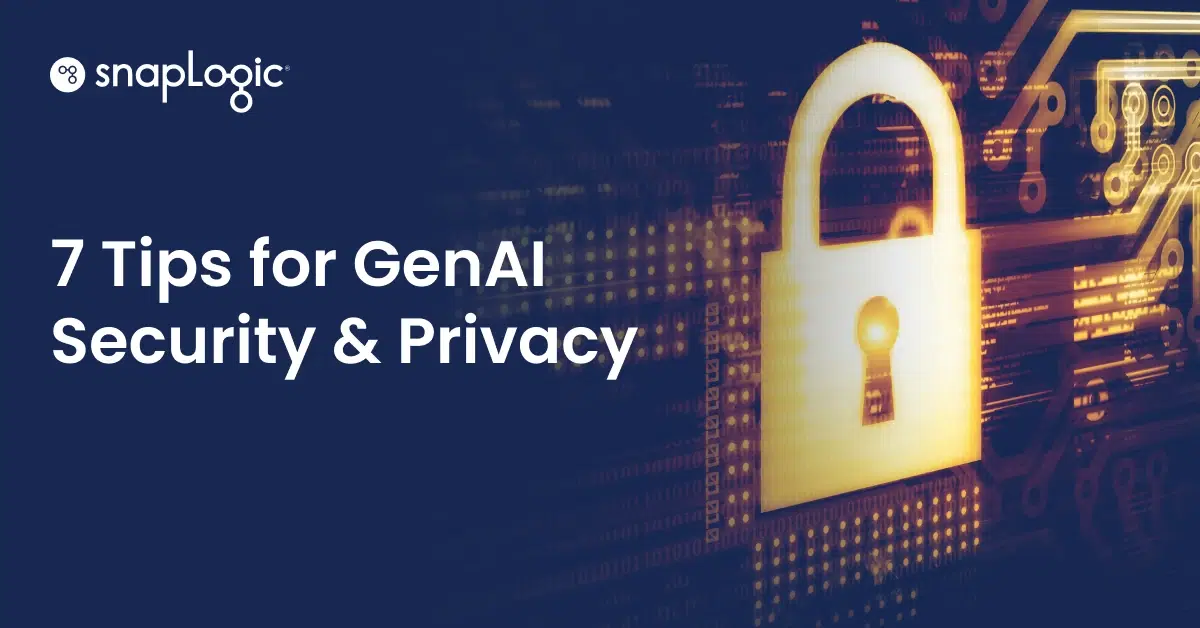Large Language Models (LLMs) such as ChatGPT are set to disrupt enterprises even more dramatically than the Internet. And, much like previous technological innovations – personal computers, the internet, cloud, and email – LLMs have sparked a wave of security concerns.
It’s human nature to respond to the unknown, especially regarding security and privacy, with a healthy dose of skepticism. Often the immediate reaction is to outright ban groundbreaking technologies like generative AI until their safety can be assured. This has been the reaction of numerous enterprises and even entire countries. However, history has consistently shown us that these innovations, when managed correctly, yield massive returns.
Instead of banning these tools, we should securely incorporate them into our systems. We’ve outlined recommendations for safely adapting to this exciting new technology.
1. Define an LLM usage policy
Crafting a usage policy for large language models is essential to ensure responsible and secure use of this technology, particularly emphasizing data security and privacy. The policy should become the foundation for ethical and secure use. Here’s an outline of what such a policy may include:
User responsibilities:
- Authorized use: Specify who is authorized to use the LLM and for what purposes
- Training and awareness: Outline the requirement for users to undergo training on ethical usage and data privacy
- Compliance: Users must adhere to relevant laws and regulations governing data privacy and security
- Prohibited activities: Be clear about what’s allowed and what’s not, such as using the LLM for illegal purposes or generating harmful content
- Consent and acknowledgment: Require users to acknowledge and consent to the policy before gaining access to the LLM
Data handling procedures:
- Data privacy: Define how user data will be handled and protected to ensure privacy
- Data security: Detail security measures to safeguard data from unauthorized access or breaches.
- Data retention and deletion: Specify guidelines for how long data will be retained and how it will be securely deleted when no longer needed
- Confidentiality: Clarify confidentiality requirements for the information generated or shared using the LLM
Enforcement specifications:
- Violation consequences: Outline potential consequences for violating the usage policy
- Progressive discipline: Detail a progressive disciplinary approach for dealing with policy violations, such as warnings, suspensions, or termination of access
- Legal ramifications: Inform users of potential legal actions for serious breaches of policy, especially those involving data privacy laws
Additional considerations:
- Ethical guidelines: Incorporate ethical guidelines for using the LLM responsibly, including considerations for bias and fairness in generated content.
- Monitoring and auditing: Specify procedures for monitoring and auditing LLM usage to ensure compliance with the policy
- Reporting mechanisms: Provide clear instructions for reporting policy violations or security incidents
Regular communication, training, and policy enforcement are crucial to ensuring compliance and maintaining trust among users and stakeholders.
2. Add LLMs to mandatory security and privacy training
Once a corporate policy is outlined, add LLM usage into mandatory security and privacy training materials. Users must be educated on the potential risks and strategies to mitigate them. Training for LLMs can cover:
- The basics of how LLMs work
- Which data is safe to process through an LLM
- Data anonymization techniques to reduce security and privacy risks
- Review and attestation of LLM policy guidelines
3. Choose your LLM providers wisely
Trusted, reputable companies like Microsoft, AWS, and Google should be your go-to sources for integrating LLMs into your infrastructure. Legitimate LLM providers offer models that are well-developed, thoroughly tested, and continuously updated. This ensures higher quality in terms of accuracy, language understanding, and performance. Using a reputable provider minimizes the risk of errors or biases in the language model’s outputs.
Established LLM providers often offer customization options and support integration with existing enterprise systems and applications. This allows enterprises to tailor the language model to specific use cases and workflows.
These industry giants have a proven track record of rigorous security measures and prompt responsiveness to user concerns.
4. Ensure derivative technologies adhere to policies
Derivative products powered by LLMs must prioritize robust security and privacy practices to safeguard user data and ensure trust in the product. Recommendations include:
- Conduct regular audits to assess and enhance security measures, identifying and mitigating potential vulnerabilities
- Adopt the latest security measures, such as encryption, multi-factor authentication, and intrusion detection systems
- Implement robust data handling protocols that encompass minimized data collection, anonymization techniques, and strict access controls
- Compliance with reputable third-party security certifications like ISO 27001 or SOC 2 demonstrates a commitment to meeting internationally recognized standards
By adhering to these policies, derivative products can uphold user privacy, mitigate security risks, and foster confidence in their operations.
5. Implement privacy settings to safeguard sensitive data
Organizations can safeguard user privacy and uphold ethical data handling practices by sending anonymized or masked data LLMs rather than personally identifiable information (PII).
Additionally, metadata, which encompasses information about data (such as timestamps, file sizes, or types), provides valuable insights for training models without exposing sensitive personal details. This approach not only mitigates risks associated with data breaches and unauthorized access but also reinforces transparency and accountability in AI deployments.
What’s important is to manage data governance and compliance to foster trust among users and stakeholders and encourage new levels of productivity with responsible AI adoption.
6. Encrypt your data to mitigate risk
Encryption ensures that data remains confidential and unreadable to unauthorized parties. When collaborating with external parties or using cloud-based services to leverage LLMs, encrypting data ensures that it remains secure during transmission and storage. This enables secure data sharing and processing across different platforms and environments.
Many industries and regions have strict regulations governing the protection of sensitive data (e.g., GDPR, HIPAA). Encrypting data when using LLMs helps companies meet these compliance requirements by safeguarding personal or sensitive information.
7. Regularly review and update policies
Periodic reviews of LLM usage policies help to assess the effectiveness of existing security measures and identify areas for improvement. By analyzing real-world usage and incidents, companies can gather valuable insights into evolving risks and adjust policies accordingly. This proactive approach helps to address emerging threats and vulnerabilities before they escalate into significant issues.
As LLM providers release updates and patches to address vulnerabilities, companies should integrate these changes into their policies and procedures. This ensures that LLM deployments remain secure and resilient against evolving cyber threats.
Another benefit of regular policy reviews is fostering a culture of continuous improvement and accountability within the organization. Engaging stakeholders and soliciting user feedback can help enhance awareness and effectiveness. This collaborative approach encourages a shared responsibility for security and privacy across the enterprise, strengthening overall risk management practices.
Final thoughts
A strategic security plan for generative AI can help enterprises mitigate security risks associated with LLM adoption and cultivate a culture of trust and responsibility in AI deployment. Embracing these principles lays the foundation for harnessing the full potential of LLMs while safeguarding the integrity and privacy of user data, ultimately paving the way for a secure and transformative future in generative AI technologies.
Learn more about SnapLogic’s Security and Compliance standards, to help companies integrate data and AI, and innovate with confidence.









